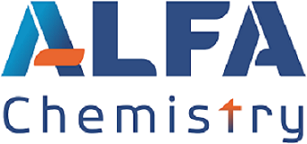| Alfa Chemistry | |
|---|---|
| Country: | United States |
| Tel: | 5166625404 |
| E-mail: | support@alfa-chemistry.com |
| QQ: | |
| Skype: | Chat Now! |
Optical Properties of Lanthanide-doped Upconverting Nanoparticles
Release time: 2025-03-21
Within biomedical applications, upconverting nanoparticles (UCNPs) demonstrate minimal phototoxicity alongside exceptional photostability and deep penetration of tissues which positions them as superior replacements for existing organic dyes and quantum dots. Near-infrared excitation achieves high-resolution imaging of living tumors and blood vessels by reducing tissue scattering.
Lanthanide-doped Upconverting nanoparticles (UCNPs) derive their optical properties from both their unique energy transfer mechanism and their optimized structural engineering. Near-infrared photon absorption by sensitizers such as Yb³? triggers multi-step energy transfer that activates luminescent centers like Er³?, Tm³? or Ho³? which results in Upconverting emission from low-energy near-infrared light to high-energy visible or ultraviolet light. Physical isolation of surface defects and solvent molecules within the core-shell structure decreases non-radiative transition probability to less than one-tenth of what it was in the original structure which boosts quantum yield to commercial standards. For example, the quantum yield of NaYF?: Core-shell particles containing Yb and Er have achieved quantum yields as high as 1%, showing a tenfold improvement over shell-free materials. Research indicates a 15% improvement in luminescence efficiency for each 1 nm thicker shell and both NaYF? and CaF? shells can deliver approximately 40 times the luminescence enhancement.
Through ion doping engineering, UCNPs can achieve full spectrum coverage: Eu³? produces characteristic red light at 613 nm, and Tb³? emits green light at 545 nm. The more innovative composite structure design extends the emission wavelength to the near-infrared II region (1000-1700 nm) through the fluorescence resonance energy transfer (FRET) mechanism, significantly improving the tissue penetration depth. The dye sensitization strategy extends the absorption range to the 800 nm band through the molecular antenna effect, achieving an 87-fold Upconverting luminescence enhancement in the Li(Gd,Y)F?:Yb,Tm@LiYF?:Nd,Yb system, while avoiding the problem of tissue overheating caused by traditional 980 nm excitation.
Progress in Synthesis and Functionalization of Lanthanide-doped Upconverting Nanoparticles
In terms of synthesis methods, the thermal decomposition method can prepare hexagonal NaYF? nanocrystals with excellent monodispersity (PDI<0.1), while the improved hydrothermal method enables mass production to reach the gram level/batch, and the water dispersibility is increased by more than 3 times. The combined screening technology successfully compressed the emission linewidth to <15 nm when the Yb³?/Er³? ratio was optimized to 20:2 through high-throughput experiments, laying the foundation for multiplex detection. In terms of surface functionalization, zwitterionic polymer modification extends the stability of UCNPs in serum to more than 72 hours, while aminosilanization treatment increases the antibody coupling efficiency to 95%, such as the targeted enrichment coefficient of anti-EGFR antibody-modified UCNPs in pancreatic cancer models of 8.7.
Innovative application expansion
In the biomedical field, ultra-small NaYbF?:Tm³? nanocrystals (7-10 nm) achieve a breakthrough in deep tissue imaging resolution to the subcellular level through the near-infrared-near-infrared conversion mechanism. The Mn²? co-doping system not only increases the red light emission ratio of Er³? to 82%, but also can be used as a pH-responsive drug carrier to achieve the integration of doxorubicin controlled release and diagnosis and treatment. More cutting-edge is that the long-lived excited state (millisecond level) of UCNPs combined with plasma enhancement technology enables single-particle detection sensitivity to reach the zeptomolar level, providing a low phototoxicity (<5 mW/cm²) solution for super-resolution microscopy (such as STED). In addition, by constructing a NaYF?@Au core-shell structure and utilizing the localized surface plasmon resonance effect, the Upconverting luminescence intensity can be enhanced by 45 times, opening up a new path for the development of miniaturized optoelectronic devices.

